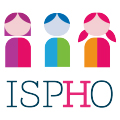Abstract
Low-grade gliomas (LGGs) represent the most common childhood brain tumors and are a histologically heterogenous group of tumors. Most LGGs are surgically resectable with excellent 10-year overall survival outcomes of more than 90 % with surgery alone. Tumors not amenable to surgical resection and those with an aggressive biology are more challenging to treat. Conventional radiotherapy is a more efficacious method of long-term tumor control than chemotherapy. However, radiation is associated with significant cognitive, endocrine, and cerebrovascular late effects, making chemotherapy an often-preferred modality over radiotherapy, especially in younger children. Multiple chemotherapy regimens have been evaluated over the past few decades with comparable survival outcomes and differing toxicity profiles. Newer regimens containing antiangiogenic agents also show promise. Recent molecular studies have implicated the BRAF oncogene, a key regulator of the MAPK pathway, and the AKT/mTOR pathway in pediatric LGG tumorigenesis. This has opened up promising new avenues for targeted therapy, with many agents currently under investigation.
Nageswara Rao, A.A. & Packer, R.J. Curr Oncol Rep (2014) 16: 398. https://doi.org/10.1007/s11912-014-0398-9

